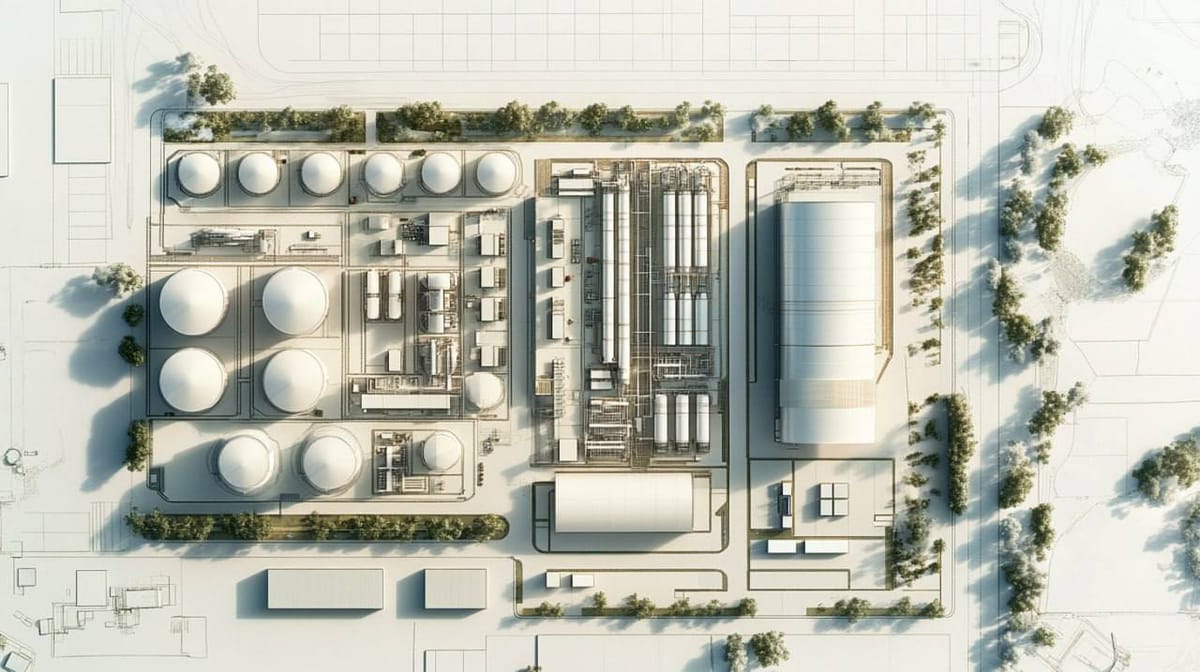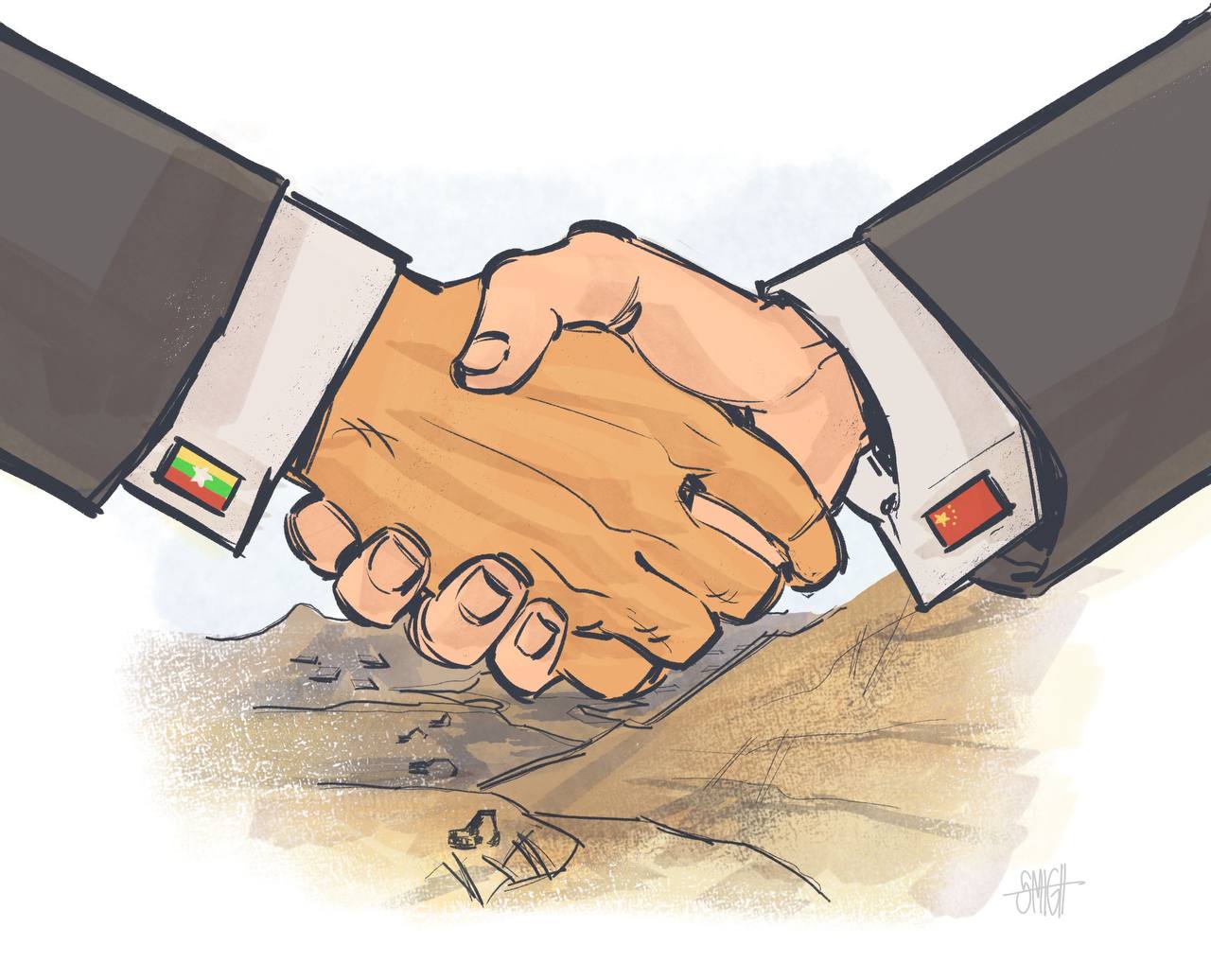
Myanmar, a Southeast Asian nation blessed with abundant natural resources, finds itself in a paradox. Despite sitting on vast reserves of oil, natural gas, and hydroelectric potential, it continues to suffer from chronic energy shortages. One of the most significant developments in recent years has been Myanmar's decision to introduce liquefied natural gas (LNG) into its energy mix, sparking hopes of modernization and energy security. But as with many things in Myanmar, the journey is far from straightforward, tangled with political, economic, and social complexities.
Myanmar's Energy Puzzle
Myanmar's energy crisis is striking. Despite having an impressive 7.8 trillion cubic feet of proven natural gas reserves, about 80% of this valuable resource is exported to neighboring countries like India, China, and Thailand. Ironically, Myanmar's natural gas is keeping the lights on in foreign cities while at home, only 26% of its population enjoys access to electricity. The rest are left in the dark, with millions depending on traditional fuels like wood and rice husks for cooking and heating.
This energy deficit isn't just an inconvenience—it's stifling Myanmar's development. The country's energy infrastructure is only able to meet about half of current demand, leading to regular blackouts, electricity rationing, and energy poverty that disproportionately affects rural areas. With just 13% of the population connected to the national grid, it's clear that Myanmar's power systems are falling short.
An Overreliance on Hydropower and Gas
Historically, Myanmar has leaned heavily on hydropower and natural gas for energy generation. With hydropower contributing over half of the country's electricity capacity, this might seem like an advantage. However, reliance on seasonal rivers means the country faces an electricity gap during the dry season when water levels drop, leaving Myanmar scrambling for power. Compounding the issue, Myanmar's domestic gas fields, which for decades powered many of its gas-fired plants, are in decline. These fields, which have been the backbone of Myanmar's energy supply, are aging, and production is falling fast.
This growing gap between demand and supply pushed Myanmar to consider alternative energy sources. Enter LNG—a promising solution that could fill the gap left by inconsistent hydropower and depleting gas fields.
The Introduction of LNG: A Bold New Step
In the late 2010s, Myanmar made its first serious moves to embrace LNG. The idea was simple: LNG could provide a more stable energy supply than seasonal hydropower, and it could also help counteract the declining production from domestic gas fields. The move towards LNG was also part of a broader strategy to diversify Myanmar's energy sources and reduce dependence on any single type of energy.
By 2020, Myanmar's government, led by the National League for Democracy (NLD), signed several high-profile contracts to bring LNG to the country. Plans included developing floating storage and regasification units (FSRUs), LNG import terminals, and new gas-fired power plants. It was an ambitious step, signaling Myanmar's determination to overhaul its energy sector and meet the growing electricity demands of its population.
A Declining Gas Industry
As Myanmar looks to the future, the present is growing more challenging. A 2023 World Bank report confirmed what many had feared: Myanmar's natural gas production is in rapid decline. Key projects like Yetagon, Yadana, and Zawtika—once the cornerstones of Myanmar's energy exports—are nearing exhaustion after more than 25 years of operation. The Shwe Gas project, which supplies gas to China, is also projected to decline by 2026.
For a country that has long depended on these gas fields to power both its economy and its power plants, this is a worrying trend. With its largest gas reserves dwindling, Myanmar faces an uncertain future—one where energy imports, like LNG, become more critical than ever.
Sanctions, Political Instability, and the Exit of Big Energy Players
Myanmar's energy challenges don't end with the depletion of natural resources. Since the military coup in 2021, the country has been hit with international sanctions, complicating its efforts to attract the foreign investment necessary for large-scale energy projects. Western sanctions on Myanma Oil and Gas Enterprise (MOGE) have made it difficult for the country to access financing and expertise for its offshore gas projects.
Major international energy companies that once saw Myanmar as a promising frontier market have begun to pull out. Total, the French oil giant that had been operating in Myanmar for over 25 years, and Australian energy company Woodside have both exited the country. This exodus has left Myanmar's energy sector in a precarious position, with fewer partners to help navigate the complex task of modernizing its infrastructure and securing reliable energy for its people.
The Road Ahead: Can LNG Deliver?
The introduction of LNG into Myanmar's energy mix holds promise. It could provide a steady, reliable source of electricity, help alleviate the chronic shortages that have plagued the country, and offer a lifeline as domestic gas production continues to fall. However, the political instability, international sanctions, and lack of infrastructure present formidable obstacles to realizing this potential.
Myanmar's LNG ambitions are a microcosm of the challenges facing developing nations looking to modernize their energy sectors while grappling with political and economic uncertainty. As the country works to balance immediate energy needs with long-term sustainability, the success—or failure—of its LNG projects will serve as a critical test of its ability to transform its energy landscape.
In the end, the Myanmar LNG case offers valuable lessons on the intricate relationship between energy, politics, and development. Whether Myanmar can turn the promise of LNG into reality remains to be seen, but one thing is clear: the country's energy future is at a crossroads.
Read More:
 Build Myanmar - MediaY3A
Build Myanmar - MediaY3A
 Build Myanmar - MediaY3A
Build Myanmar - MediaY3A
Build Myanmar-Media : Insights | Empowering Myanmar Youth, Culture, and Innovation
Build Myanmar-Media Insights brings you in-depth articles that cover the intersection of Myanmar’s rich culture, youth empowerment, and the latest developments in technology and business.
Sign up for Build Myanmar - Media
Myanmar's leading Media Brand focusing on rebuilding Myanmar. We cover emerging tech, youth development and market insights.
No spam. Unsubscribe anytime.
Sign up now to get the latest insights directly to your mailbox from the Myanmar's No.1 Tech and Business media source.
📅 New content every week, featuring stories that connect Myanmar’s heritage with its future.
📰 Explore more:
- Website: https://www.buildmyanmarmedia.com/
- Facebook: https://www.facebook.com/buildmyanmar
- YouTube: https://youtube.com/@buildmyanmarmedia
- Telegram: https://t.me/+6_0G6CLwrwMwZTIx
- Inquiry: info@buildmyanmar.org
#BuildMyanmarNews #DailyNewsMyanmar #MyanmarUpdates #MyanmarNews #BuildMyanmarMedia #MyanmarNews #GlobalNews #TechNewsMyanmar #BusinessNewsMyanmar #Updates #Insights #Media